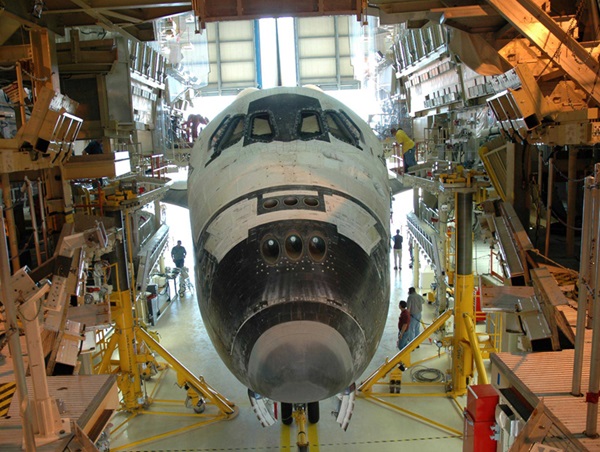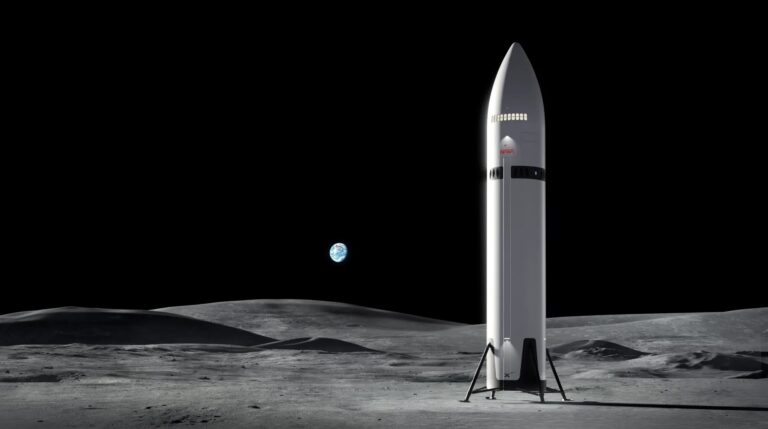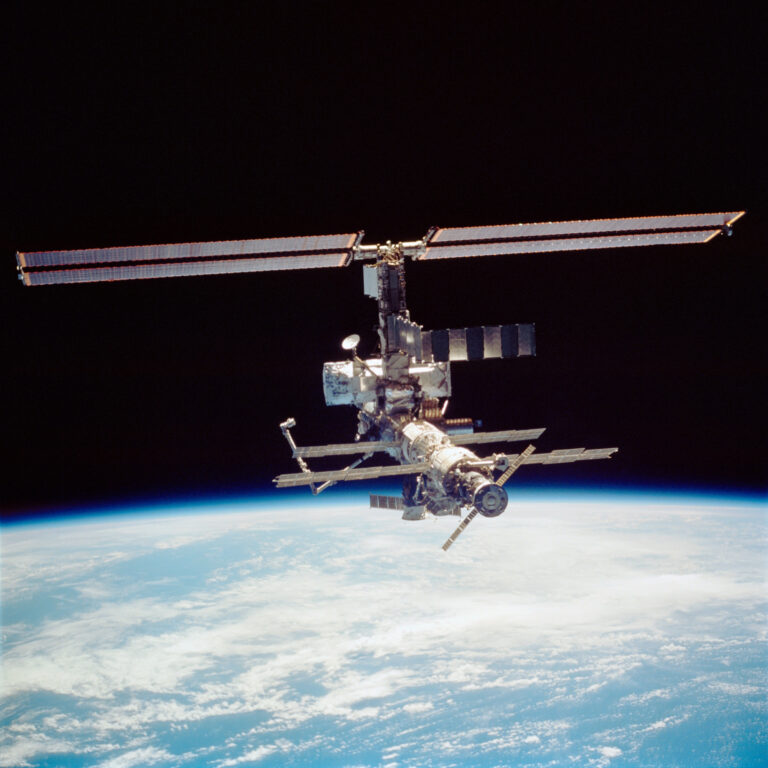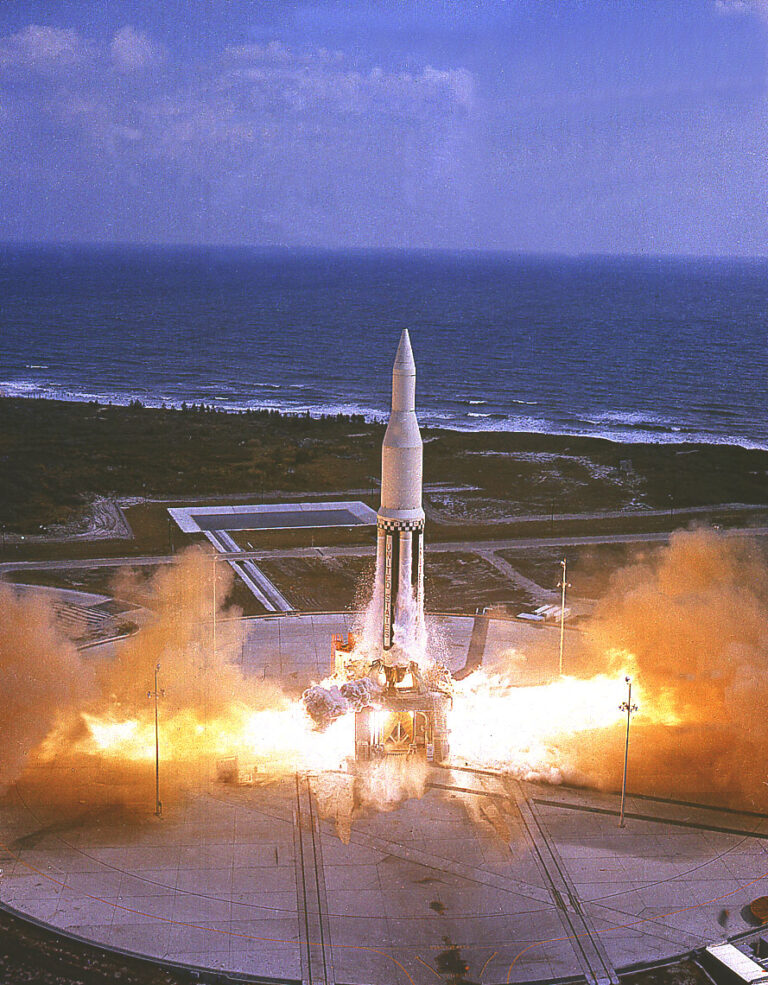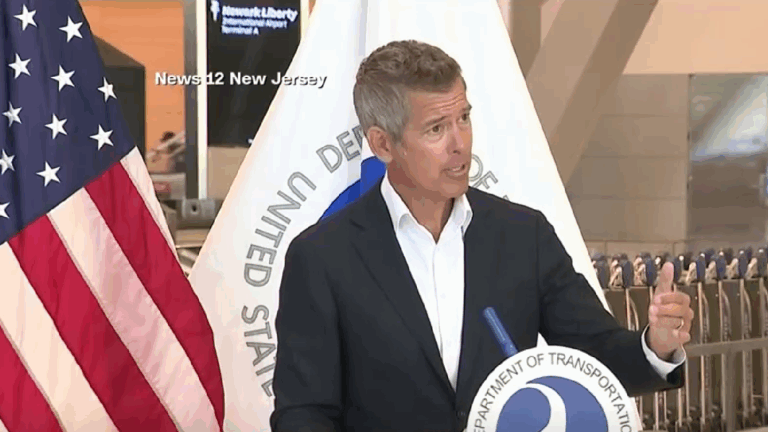Key Takeaways:
NASAhas announced that the space shuttle likely won’t fly before March 2006. Part of the delay is caused by the return of external tanks to the Michoud Assembly Facility in New Orleans, the space agency said.
Insulating foam broke off of Discovery’s external tank moments after STS-114 launched July 26, surprising astronauts and shuttle managers who thought the problem was fixed.
Factory seconds
The first tank to be returned, ET-119, set sail on a covered barge Tuesday and should arrive at Michoud over the weekend. According to Wayne Hale, deputy manager of the shuttle program, the tank is expected to be back at the Kennedy Space Center’s (KSC) Florida docks by mid-November. NASA plans to return two other external tanks — ET-120 and ET-118 — already on hand. Hale said the last of these would be shipped back to KSC in mid-January 2006.
At an August 18 press conference, NASA’s Bill Gerstenmaier said an area of interest on the tanks is the PAL (Protuberance Air Load) ramp, a hand-applied foam ridge that protects cables and pressurized lines during launch. The PAL ramp on STS-114’s external tank shed the largest piece of foam. In 2003, falling foam caused damage that ultimately doomed space shuttle Columbia and its crew.
“We want to take a look at some of the tanks that are already set up, ready to go fly. So, we want to dissect some of the PAL ramps that are on vehicles,” he said. “I’m not picking March because we’ve made progress, but we’re starting to understand … the areas that we want to do rework on. … We’re going to have to repair the PAL ramp, we think,” Gerstenmaier admitted. “How exactly we do that, we don’t know yet.”
“We don’t see that the task remaining before us is as difficult as the tasks we have behind us,” said NASA Administrator Mike Griffin.
Minority report
The Return to Flight Task Group published its final report August 17, the day before the press conference. Headed by former astronauts Thomas Stafford and Richard Covey, the group oversaw NASA’s efforts to implement safety reforms recommended by the Columbia Accident Investigation Board.
What made headlines was a minority opinion drafted by seven of the panel’s 26 members blasting NASA management. The group pointed out that NASA scheduled and then delayed Discovery’s return to space 15 times, and this schedule pressure affected what fixes would be considered. With a launch only a few months away, NASA managers shied away from long-term, and possibly superior, changes to the shuttle.
Shuttle managers did not “accurately evaluate how much or how little risk is associated with their decisions, particularly decisions to sidestep or abbreviate any given procedure or process,” the report said.
Management relied on past success as evidence of safety, a fault that played a role in both the Columbia and the 1986 Challenger disasters. “It has proven irresistible for some officials to characterize the modified external tank as ‘safer’ … or even ‘fixed,’ when neither the baseline of the old tanks nor the quantitative improvement of the new design has been established,” the report said. “The tank may well be safer but without … objective evidence it is impossible to know.”
One result of these problems was skyrocketing costs. “At the end of 2 ½ years and $1.5 billion or more, it is not clear what has been accomplished,” the critique said.
Neither Stafford, Covey, nor NASA management would comment on the minority view other than to say it represents the personal opinion of certain task-group members. Covey noted he thinks NASA managers are “approaching risk and the acceptance of risk” appropriately. “We have to go fly to learn a lot of the things we learned on this flight,” he said.

